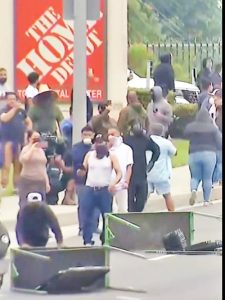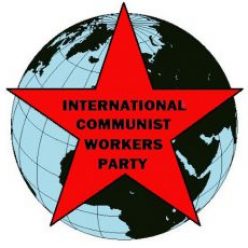
Los Angeles (USA) Fighting ICE Kidnappings: A Party Collective Reports
LOS ANGELES COUNTY, June 13— “My sister accidentally found herself in the middle of the confrontation in Paramount,” a comrade reported. That was June 7, the second day of Trump’s intensified immigration raids in Los Angeles County.
“People in cars were saying, ‘ICE, ICE!’ It felt like a war zone,” the distraught sister told family in Compton, across the freeway. ICE came in like it was an emergency. Everyone was traumatized, hearing helicopters overhead.
The comrade’s brother and sister-in-law went to look. They bypassed the LA County Sheriffs and documented tear gas attacks on protesters who hadn’t yet thrown anything. They were told to walk away, but people were targeted as they walked away. Ambulances couldn’t get to the injured people.
This immigrant family – some undocumented – was more angry than afraid. The sister-in-law works with undocumented and unhoused people, but this is the first time she’s gotten active. She, her husband, and the comrade joined the protests in downtown LA the next night.
“We were managing traffic at Alameda and Temple,” the comrade reported. “There were lots of young kids. This was brand new for them. We told them not to block the streets.
“I met an agitator,” she continued. “He wanted to throw something at the cops from where we were all protesting. I said, ‘If you’re going to do it, go right up to them but don’t do it in this group where you’re going to get someone hurt.’ He left. We left soon after. Things were getting too hot.”
The comrade’s traumatized sister, angry at first, then flipped. “I don’t want to be involved if they are looting and setting fires,” she said.
“Nonviolence doesn’t mean we can’t defend ourselves,” the comrade replied. “But attacking police is a needless risk.”
She reported all this to our Party club. Another comrade noted that protesters burned four self-driving taxis because their cameras pointed in all directions. They were being used to spy on protesters.
And there wasn’t much looting. In Little Tokyo, when a few people tried to break into a store, other protesters stopped them.
By the time we met, there had been a week of mass protests. Another comrade had distributed Red Flag at a labor rally. She then had lunch with a friend who’d also attended. The comrade had joined a noisy rally outside a hotel where ICE was staying, distributing 100 more copies of Red Flag. Later the hotel told ICE to leave. Since then, protests have spread to many other hotels, forcing ICE out of some.
Where Is the “Front Line”?
A bus operator who reads Red Flag told a distributor, “I didn’t think you’d be here. I thought you’d be at the front lines, kicking a cop in the shins.”
“This is the front line,” she replied. “The working class is the front line. You are.”
Angry masses desperately seek to stop or slow down the inhuman fascist deportation machine. They defy cops and curfews. They patrol neighborhoods to warn of ICE sightings. They urge workers to “know your rights.” They document ICE kidnappings. They try to surround ICE vehicles. They mobilize communities. Sometimes they succeed in freeing people.
But we are up against capitalist state power. Resistance – peaceful or otherwise – is not enough. We must resist in ways that help us prepare for communist revolution. For overthrowing the capitalist state. For destroying its roots in capitalist wage slavery. For creating liberated zones, and then a world, where every worker belongs and nobody is a “foreigner.”
That’s why the “front line” of the fight against the ICE Gestapo is the struggle to spread Red Flag to workers and soldiers. They are the key to communist revolution.

